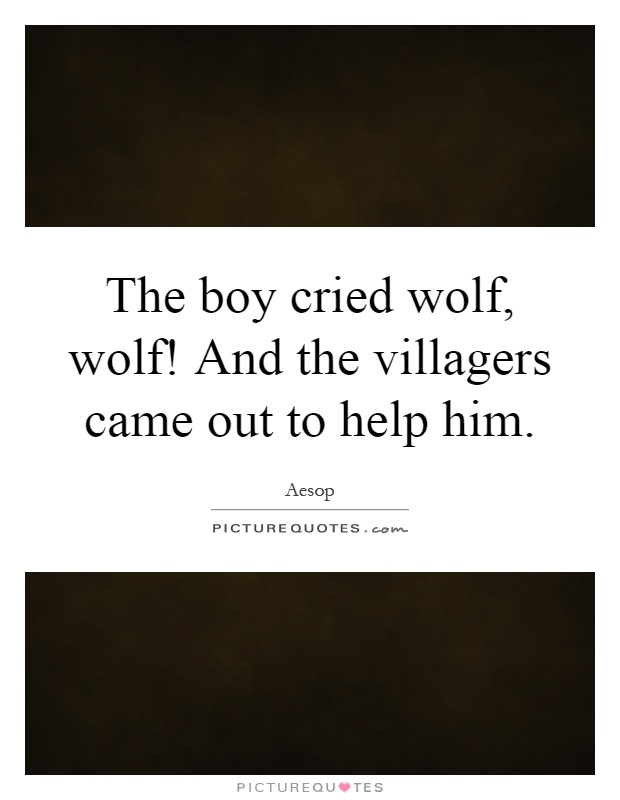The boy cried wolf, wolf! And the villagers came out to help him

The boy cried wolf, wolf! And the villagers came out to help him
The story of "The Boy Who Cried Wolf" is one of Aesop's most well-known fables, teaching a valuable lesson about the consequences of lying and the importance of honesty. In this tale, a young shepherd boy is tasked with watching over a flock of sheep in the hills. Feeling bored and seeking attention, the boy decides to play a trick on the villagers by falsely shouting, "Wolf, wolf!" and claiming that a wolf is attacking the sheep.Upon hearing the boy's cries, the concerned villagers rush to his aid, only to discover that there is no wolf to be found. The boy laughs at his successful prank and enjoys the attention he receives from the villagers. However, the villagers soon realize that the boy has deceived them and return to their homes feeling frustrated and annoyed.
The next day, the boy decides to play the same trick again, shouting, "Wolf, wolf!" in distress. Once again, the villagers come running to help, only to find that there is no wolf and that the boy has lied to them once more. This time, the villagers are even more upset and warn the boy that if he continues to cry wolf falsely, they will not come to his aid when a real wolf appears.
Sure enough, a few days later, a wolf does appear and attacks the boy's flock of sheep. The boy cries out for help, but this time, the villagers do not believe him and refuse to come to his aid. The boy learns a harsh lesson about the consequences of lying and the importance of honesty, as he watches helplessly as the wolf devours his sheep.
Through this fable, Aesop teaches readers the importance of telling the truth and the consequences of deceit. The boy's actions not only put his own life in danger but also jeopardize the safety of his flock and the trust of the villagers. The story serves as a cautionary tale, reminding us that honesty is always the best policy.












 Friendship Quotes
Friendship Quotes Love Quotes
Love Quotes Life Quotes
Life Quotes Funny Quotes
Funny Quotes Motivational Quotes
Motivational Quotes Inspirational Quotes
Inspirational Quotes